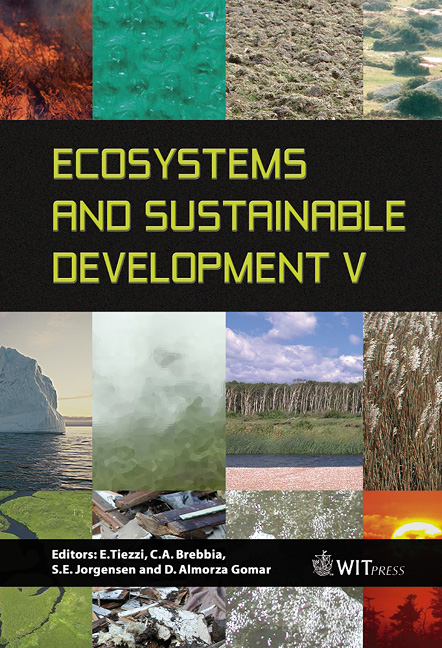Thermodynamic Optimisation Of The Use Of Natural Resources: An Agroalimentary Production In A Chianti Farm (Italy)
Price
Free (open access)
Transaction
Volume
81
Pages
8
Published
2005
Size
322 kb
Paper DOI
10.2495/ECO050031
Copyright
WIT Press
Author(s)
S. Borsa, N. Marchettini, A. Pizzigallo & F. M. Pulselli
Abstract
Agriculture is deeply based on the in loco availability of natural resources. They are mostly provided for free by the environment and often neglected by traditional accounting systems since it is difficult to measure their contribution or their physical weight with respect to the marketable input expressed in monetary units, more familiar to most people. The management of natural resources is a fundamental step toward the sustainability of a productive process. In this sense, it is necessary to answer some questions: how much does the local environment support the system? How high is the level of dependence of the system on other ecosystems? How much does the local environment contribute to make a given profit? This paper presents the environmental assessment of the use of resources for an agroalimentary production system located in the Chianti area (Province of Siena - Italy) by using Emergy evaluation, a thermodynamic based methodology introduced by Howard Odum during the ‘80s. The use of Emergy enables one to calculate some sustainability indicators (such as Environmental Loading Ratio, Emergy Yield Ratio, Emergy Density, Emergy Investment Ratio), able to give a systemic and holistic picture of the production process from an environmental point of view. Furthermore, this paper introduces the concept of \“eMternality” to provide a monetary measure of the contribution of Natural Capital to the system. Starting from the economic result of the productive process, the method of \“eMternalities” allows one to redistribute the income among all production factors, both marketable and environmental. Keywords: agriculture, thermodynamic indicators, sustainable development, emergy evaluation, emternalities.
Keywords
agriculture, thermodynamic indicators, sustainable development, emergy evaluation, emternalities.





